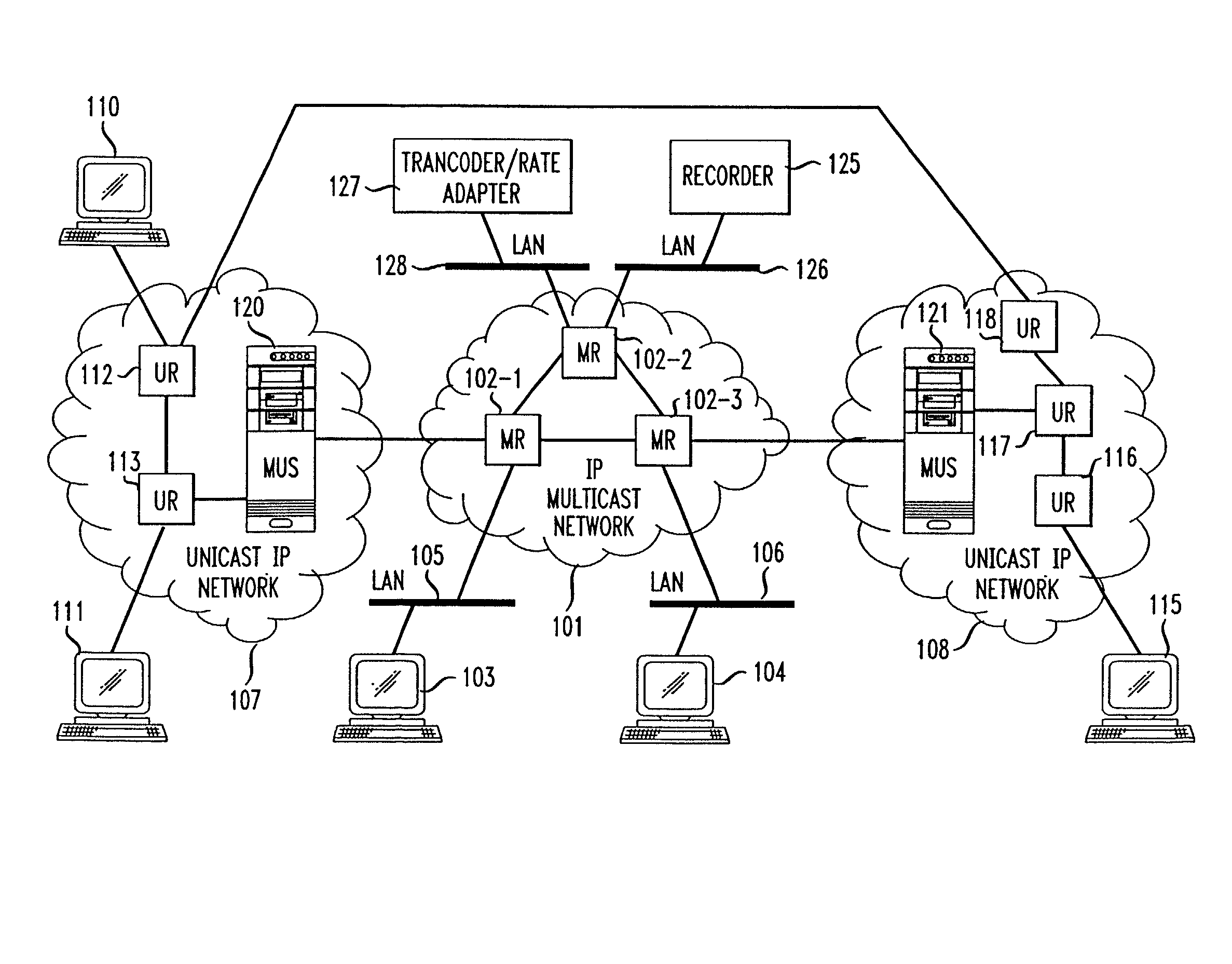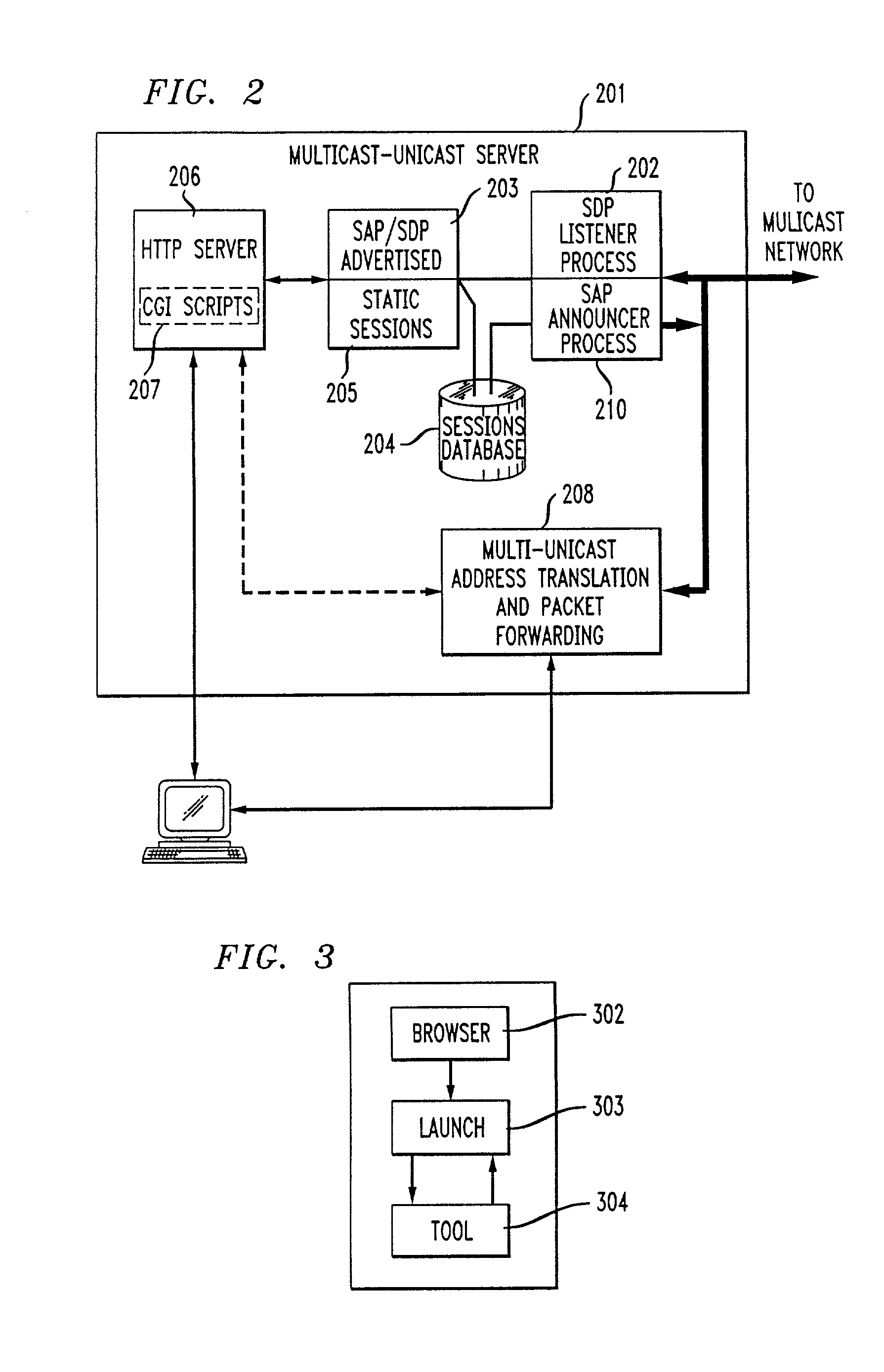Method and system for a Unicast endpoint client to access a multicast internet protocol (IP) session
a multicast internet protocol and endpoint client technology, applied in the field of data communication, can solve the problems of limiting the ability of users at unicast endpoint clients, and it is not possible for unicast endpoints to access multicast sessions
- Summary
- Abstract
- Description
- Claims
- Application Information
AI Technical Summary
Benefits of technology
Problems solved by technology
Method used
Image
Examples
Embodiment Construction
[0014]With reference to FIG. 1, an IP Multicast network 101 is shown including, as way of illustration, three interconnected Multicast Routers (MR) 102-1, 102-2, and 102-3. A well known currently in place IP Multicast network is the so-called MBONE (Multicast Backbone), which is a public shared IP Multicast network spanning many countries and covering thousands of IP sub-networks. In addition to the MBONE, numerous private Intranets also use Multicast IP for intra-corporate communications. A plurality of multimedia client terminals are connected to IP Multicast network 101, for example the MBONE. For way of illustration only, in FIG. 1 two client terminals 103 and 104 are shown connected to network 101 through respective Local Area Networks (LANs) 105 and 106, respectively. Each LAN is connected through a customer premises router (not shown) over, for example, a T1 line, Frame Relay (FR), ATM, or an X.25 connection. In accordance with Multicast communication, a sender of information...
PUM
 Login to View More
Login to View More Abstract
Description
Claims
Application Information
 Login to View More
Login to View More - R&D
- Intellectual Property
- Life Sciences
- Materials
- Tech Scout
- Unparalleled Data Quality
- Higher Quality Content
- 60% Fewer Hallucinations
Browse by: Latest US Patents, China's latest patents, Technical Efficacy Thesaurus, Application Domain, Technology Topic, Popular Technical Reports.
© 2025 PatSnap. All rights reserved.Legal|Privacy policy|Modern Slavery Act Transparency Statement|Sitemap|About US| Contact US: help@patsnap.com



